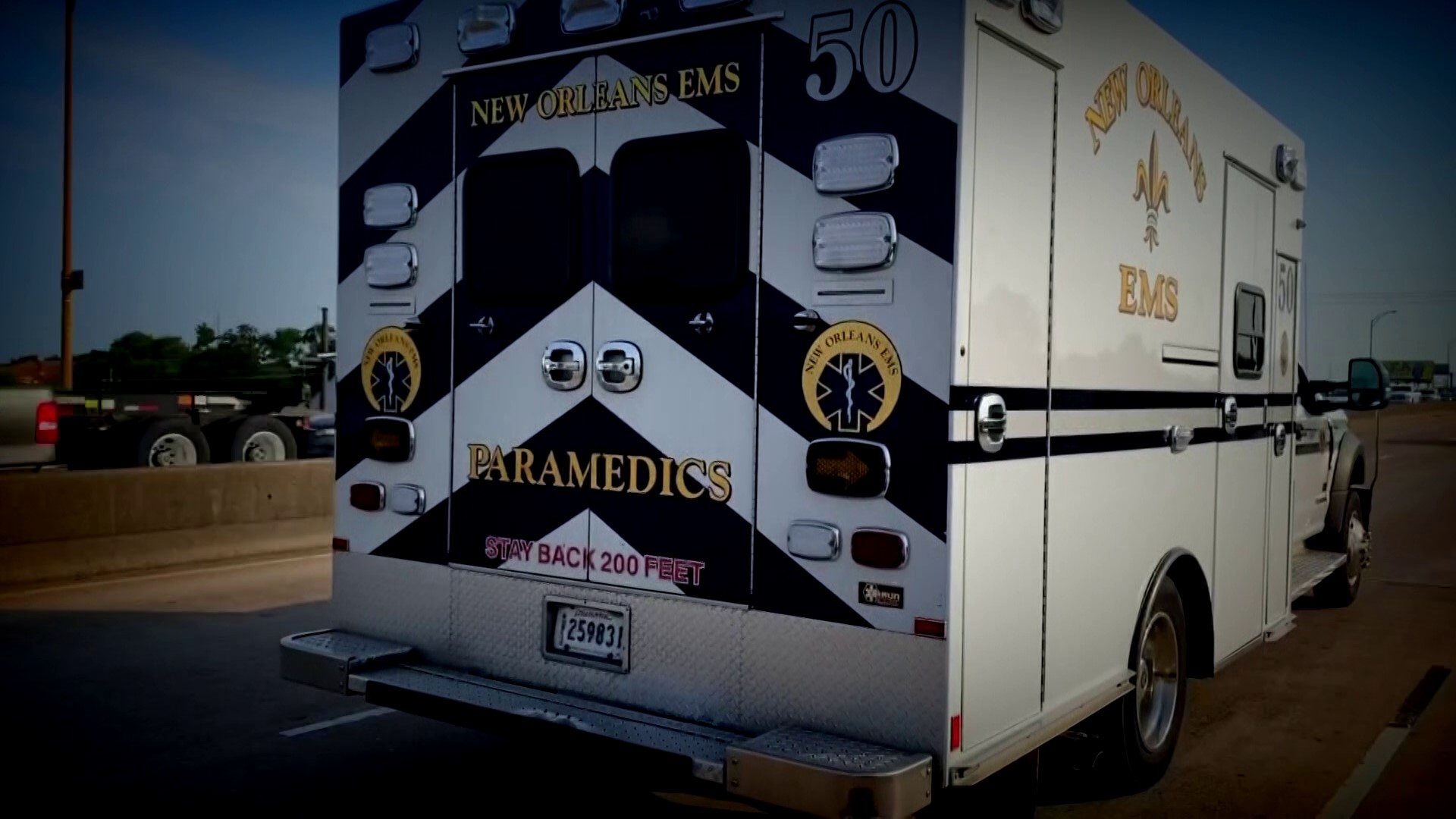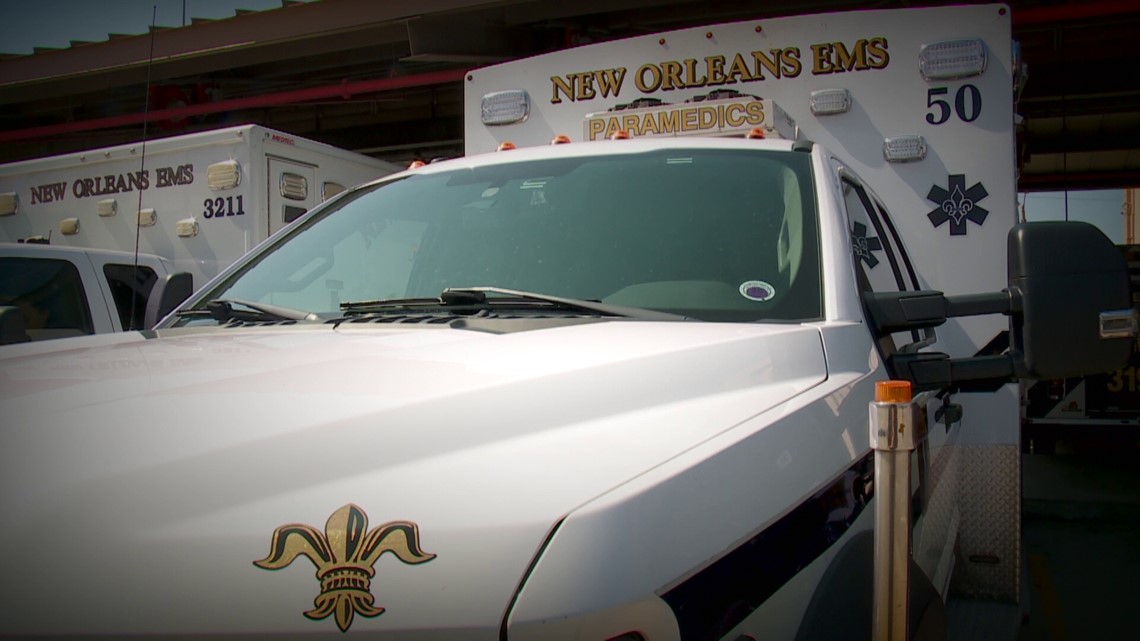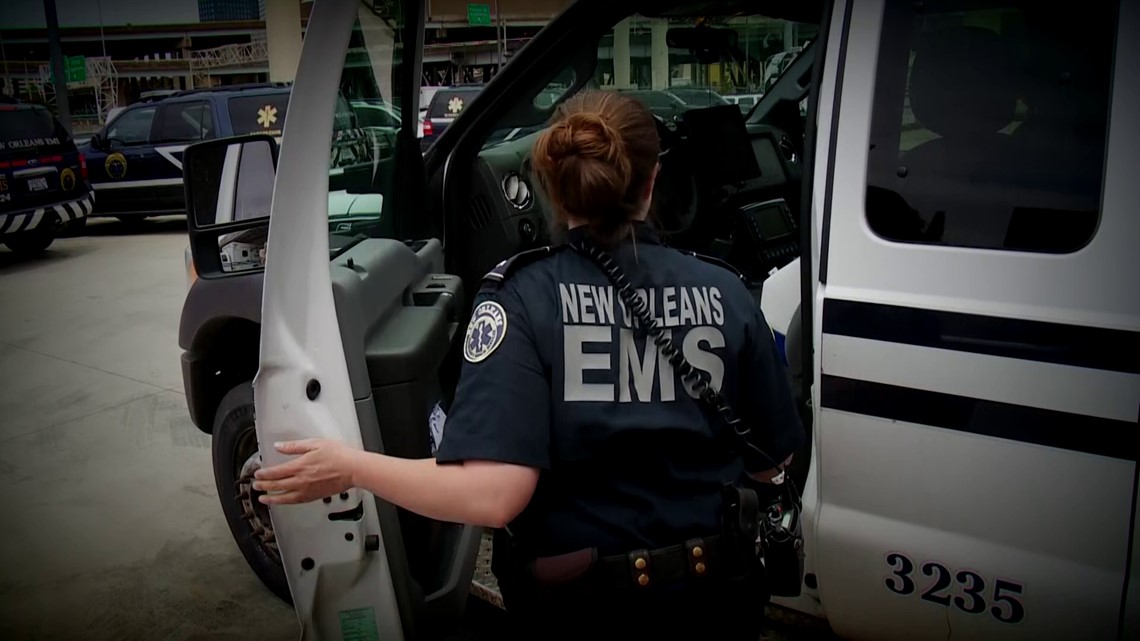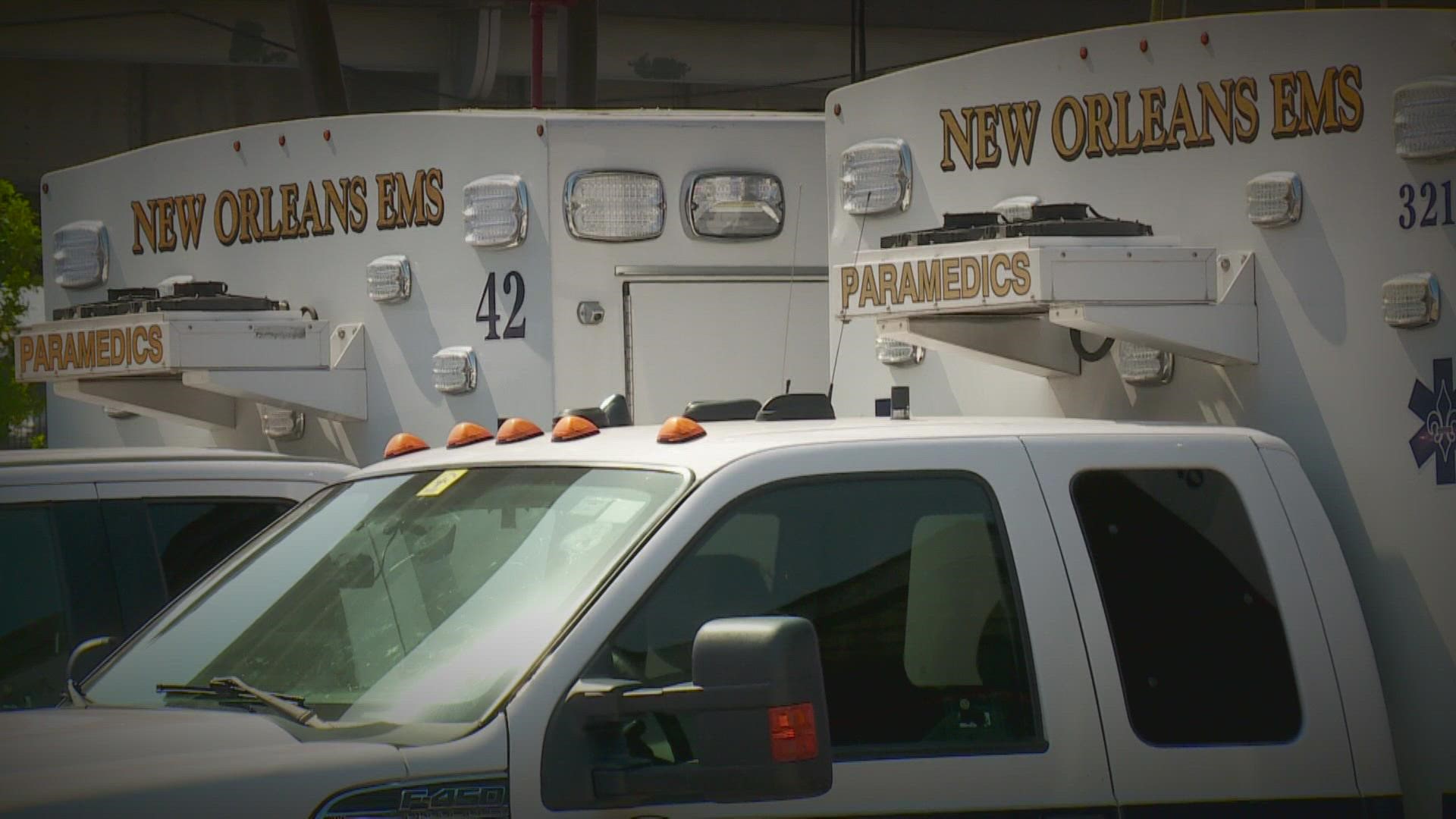EMS in crisis: New Orleans 911 callers could wait hours for ambulance
Even before the COVID-19 pandemic exposed critical shortages among the city’s medical first responders, the crisis was mounting.

This is part one of Michael Perlstein's two-part investigation into the crisis at the New Orleans EMS. Watch part two of this investigation on Friday, Oct. 29 on WWL-TV
Imagine calling 9-1-1 for a medical emergency and you’re kept waiting. Or instead of an ambulance, a fire truck arrives. Or even worse, nobody shows up at all.
These frightening scenarios have actually taken place in New Orleans in recent months, according to New Orleans EMS officials and records of emergency calls. Even before the COVID-19 pandemic exposed critical shortages among the city’s medical first responders, the crisis was mounting.
'No Units Available'


“This is the worst I’ve seen it,” said Amanda Williams-Johnson, a former EMS paramedic who left recently due to the stressful conditions. “It really is. Hands down, it's the worst.”
Dr. Emily Nichols, director of New Orleans EMS, is frank about the city's serious shortage of ambulances and the medics to operate them. She admits that she has been forced to jump into ambulances to help answer calls.
“Our chiefs and several of our administrative staff have worked shifts,” Nichols said. “I have gone on several calls whenever there was a concern for a response.”
In one recent emergency radio call obtained by the WWL-TV, a dispatcher states, “I relayed the information to EMS. Bio-hazard, possible cut. Foot cut. They will send a unit out when they are finished the calls they are on. Possible ETA: one hour.”
For a more complete picture, WWL-TV obtained NOEMS records going back to the beginning of 2019. Since then, calls for service have held steady in the range of 1,000 to 1,500 a week. But another measure, known as NUAs or “no unit available,” kicks in when no regular EMS ambulance is free to respond.
In 2019, NUAs topped 300 a week eight times over the entire 12 months. Compare that to this 2021, when NUAs topped 300 13 times in just the first six months. In mid-June, NUAs hit a one-week high of 475, the records show.
“The calls just keep stacking up, stacking up, and it's hard to keep up with that,” Williams-Johnson said.
Once a call is marked NUA, they are supposed to roll over to other ambulance companies who provide mutual aid backup. But their increasing frequency is clear sign of stress on the system, Nichols and other medics said.
'Squeezing the System'


One of the city's primary mutual aid partners is Acadian Ambulance Service. But the surge in COVID calls, staff shortages and overcrowded hospitals have also hit Acadian, meaning they're not always available.
“It's a true emergency, life and death,” said Tim Burke, Acadian Ambulance regional vice-president. “That is where we are because of all of these factors squeezing the system.”
Dr. Nichols said she understands the frustration of people seeking medical help, where every minutes can seem like an hour. But in order to optimize effectiveness amid the shortfalls, NOEMS has been forced to triage the 9-1-1 calls to make sure the most serious emergencies get answered first.
“We've had a lot of tough conversations. And a lot of heated conversations,” Nichols said. “The unfortunate reality is that while every call feels like an emergency to the person calling, we have to prioritize the person who is in the most dire of circumstances.”
Many times, especially during the recent COVID spikes, even mutual aid ambulances haven't been available.
When that happens, the New Orleans Fire Department responds with medics who try to stabilize patients, but their trucks aren't equipped to transport them to a hospital.
”It's putting a huge strain on our guys and on the citizens,” said New Orleans Fire Union President Aaron Mischler.
Mischler said his firefighters are not only responding to more calls more often, they find themselves waiting longer and longer for an ambulance to arrive.
“Where it used to be 10 minutes, now we're on the scene sometimes a half hour, sometimes an hour, a few times it's been over two hours, four hours,” he said.
A Full-Blown Crisis


There are no records that show the number of patients who may have suffered more severe medical consequences, or even death, due to the city's ambulance crunch. But there is one measure used by ambulance companies nationally that can serve as a rough indicator.
The percentage of calls in which an ambulance arrives within the national standard of 12 minutes or less is tallied by New Orleans EMS as RTC, which stands for response time compliance.
While the RTC percentage has mostly stayed within the 60 to 70 percent range since 2019, from May 30 to July 10 of 2021 the percentage never topped 60, at one point dropping as low as 53 percent, the EMS records show.
“It got really low, I'll be honest, when we started losing more staff that were ill,” Nichols said.
Nichols admitted that New Orleans EMS was in a full-blown crisis in mid-July. The agency was saved by the addition of 16 federally funded “surge ambulances” from around the region to help out.
“The day before the ambulances came, it was dire,” she said.
Those reinforcements, along with a lull after Hurricane Ida and a dip in COVID cases, pulled New Orleans EMS from the brink. But even with the surge units, some calls are left waiting at peak times.
“We still have times when we don't have any ambulances available,” said former NOEMS paramedic Ashley Whittington. “It is absolutely a perfect storm. It is absolutely critical.”
Nichols, as well as national industry leaders, agree that the underlying reasons for the crisis – and the pressures on front-line EMTs and paramedics – are not going away any time soon.
Just like shortages in other jobs, a combination of high stress, low pay and job burnout are causing front-line medics to leave faster than they can be replaced.
Those shortages only serve to intensify the stress on the medics who are still on the job.
“Every call places a burden when you feel like you cannot do things the way you would want them,” Nichols said. “And that's hard. That's hard for any medical provider.”
► Get breaking news from your neighborhood delivered directly to you by downloading the new FREE WWL-TV News app now in the IOS App Store or Google Play.


